The Glass House on the Hill | A Modern Martha’s Vineyard Home Tour
A Martha’s Vineyard stunner that Frank Lloyd Wright would have loved.
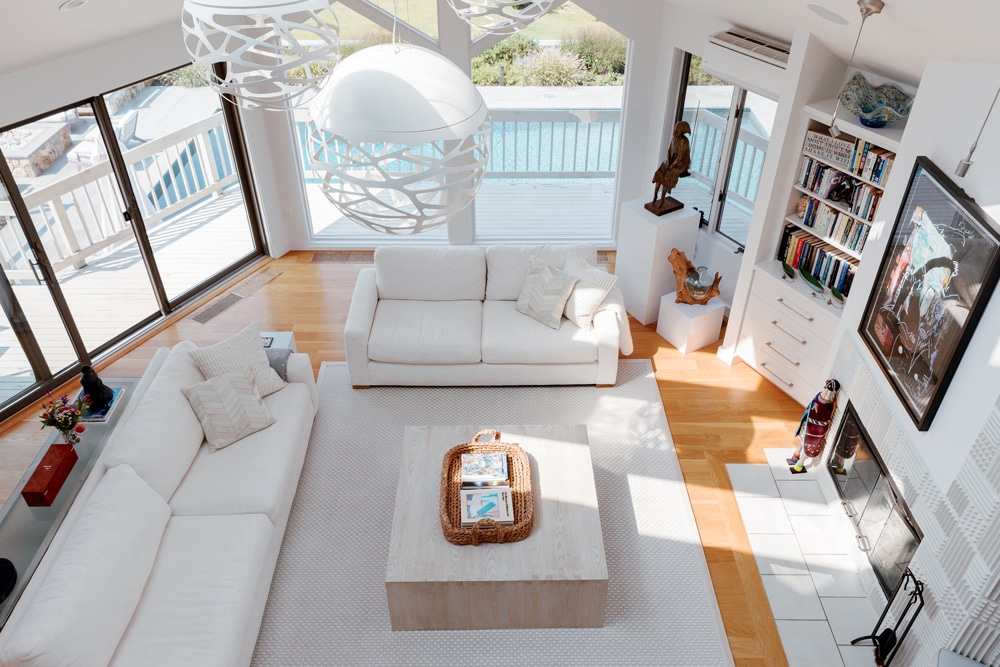
At Juliette and Walter Pryor’s home in West Tisbury, Massachusetts, original artwork and treasures collected on family travels abroad offer a charismatic contrast to the living room’s neutral tones.
Photo Credit : Elizabeth Cecil | Styling by Liz HynesBy Tatsha Robertson
The moment our SUV struggled up a hill in the woods, I held my breath. It was a cold April night in 2019, and friends had just picked me up from the ferry in Vineyard Haven. The swirling road leading to the town of West Tisbury was dark. The estate we entered had no outdoor lights: just looming rocks and trees. And when the SUV started wobbling up the rocky terrain, I gasped.
My reaction, however, had nothing to do with fear—rather, I was starstruck.
Up on the hill, there it stood: an off-white wood-frame midcentury home that seemed to glow from within. I’d been coming to the Vineyard for years, staying in the quaint gingerbread houses and Cape Cods in Oak Bluffs, where many fellow African Americans have congregated for decades. But this home didn’t look like any I’d seen in Martha’s Vineyard. Its striking facade was angular, with glass everywhere. A giant wall of windows invited us inside. My husband and I had recently returned from Phoenix, where we had spent a day at the winter home of the great Frank Lloyd Wright, who famously blurred the inside and outside in his designs.

Photo Credit : Elizabeth Cecil | Styling by Liz Hynes
Entering through the kitchen, I was struck by a large, beautiful installation of blue, high-gloss lacquered pantry cabinets. The eating nook was framed by more windows, where Joelle, a New Yorker friend who had moved to Texas, and I drank wine as we laughed, mesmerized by the sea all weekend.
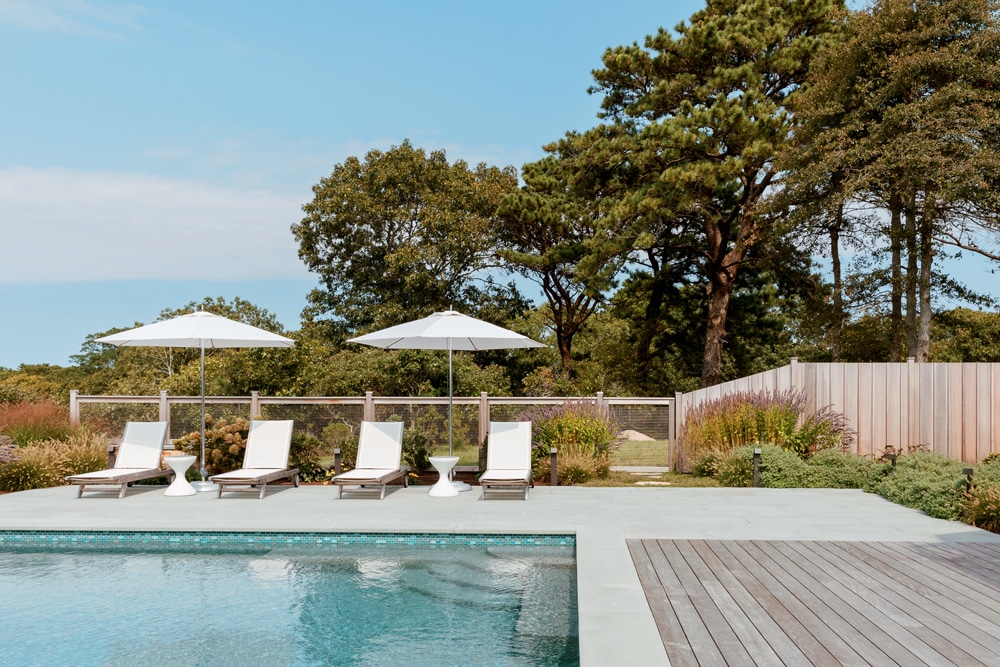
Photo Credit : Elizabeth Cecil | Styling by Liz Hynes
Nestled on 3¼ acres, this magnificent home could not have been more comfortable: Sit on the white couches in the living room and look straight through the expansive house to Vineyard Sound. Have a drink while gazing over the Elizabeth Islands, or turn east to a view that stretches across the water to the town of Falmouth. Wright envisioned living with nature, so he surrounded his home with succulents. Here, too, the expansive rear-landscape backyard was ornamented by dry plants that could have come straight from Arizona.
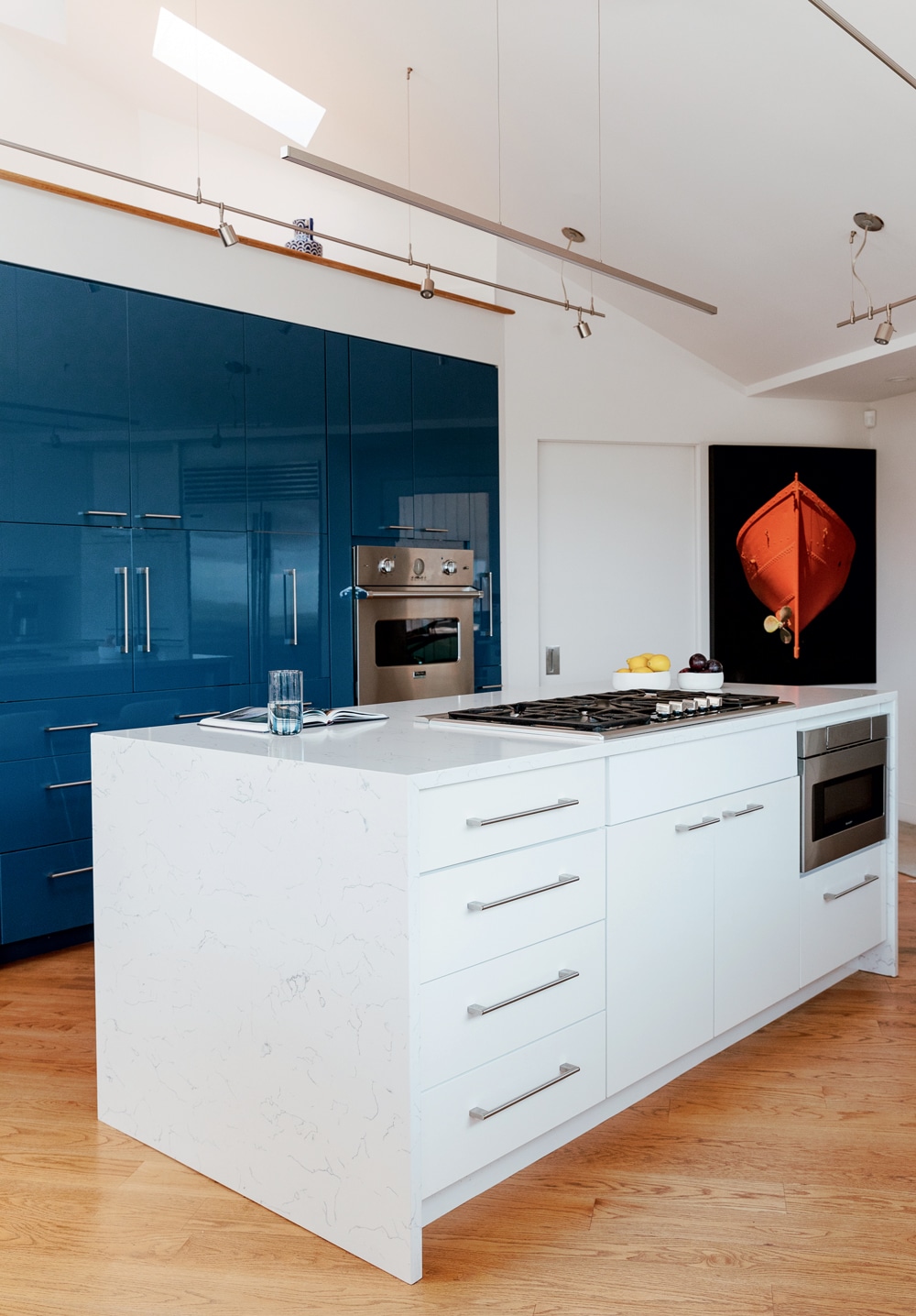
Photo Credit : Elizabeth Cecil | Styling by Liz Hynes
Could this home be a Frank Lloyd Wright?
Joelle’s older sister, Juliette Pryor, owns the home with her husband—and soulmate—Walter. Both are lawyers based in Atlanta. I had heard of Juliette from Joelle, and from having read an article about her as a leading corporate lawyer rock star. Both Juliette and Walter were known to be generous people, sponsoring family travel, being lay leaders in the church, sending money to Black colleges, and hosting school and social charities.
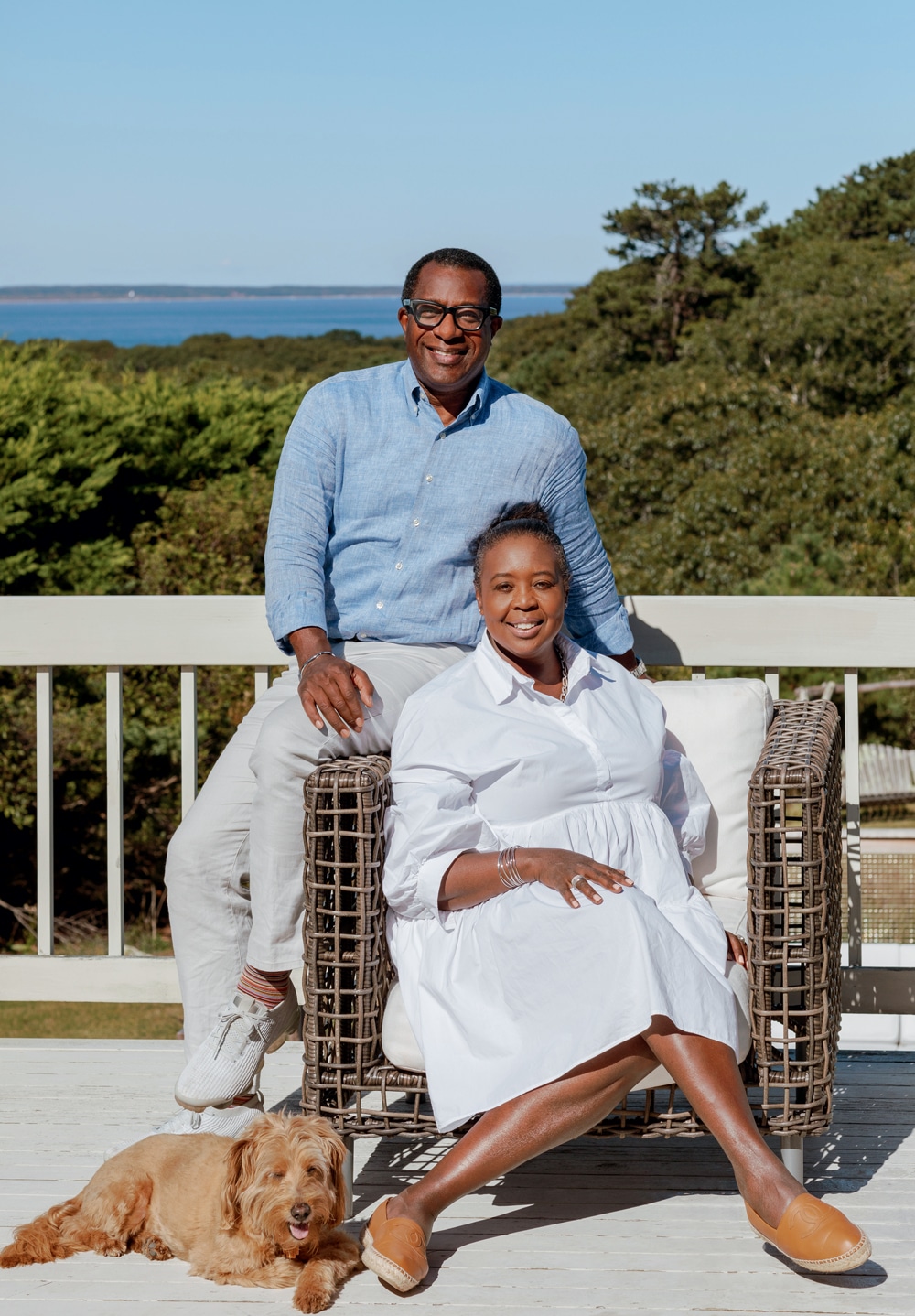
Photo Credit : Elizabeth Cecil | Styling by Liz Hynes
Last summer, I returned to the 4,100-square-foot house and finally met the Pryors. I took everything in again. When you enter the living room, a spiral staircase leads you to the mezzanine, where you can stand behind glass railings and stare out at the sweeping green landscape. Up there, I noticed a swimming pool had been added where the succulents used to be. The Pryors are intentional in showcasing artists of color throughout the house: The bronze nude sculpture is by Susan Williams, a Black artist from Arkansas. Rhonda K. Brown created the large painting called “Big Mama” that greets you when you enter the house. The sculpture in the powder room called “The Fisherman” is by a Mexican artist named Hugo Tovar.
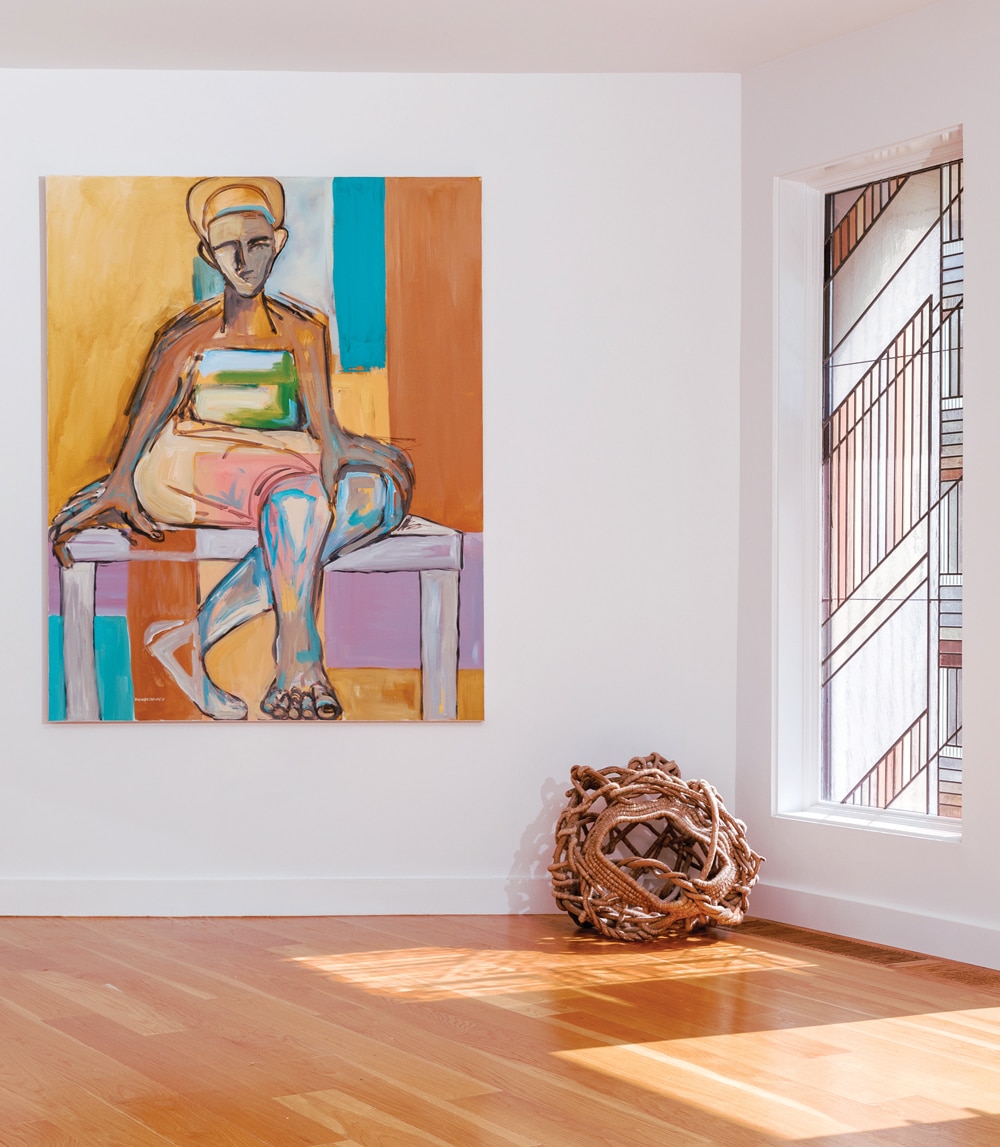
Photo Credit : Elizabeth Cecil | Styling by Liz Hynes
Walter promised that Juliette would be coming soon, and he led me through the home: With five bedrooms and four and a half bathrooms, aside from a mezzanine, there’s a foyer, a family room, and two laundry rooms. A large portrait of the Pryors’ two now-grown children, Adjua and Wade, overlooks the stunning living room.
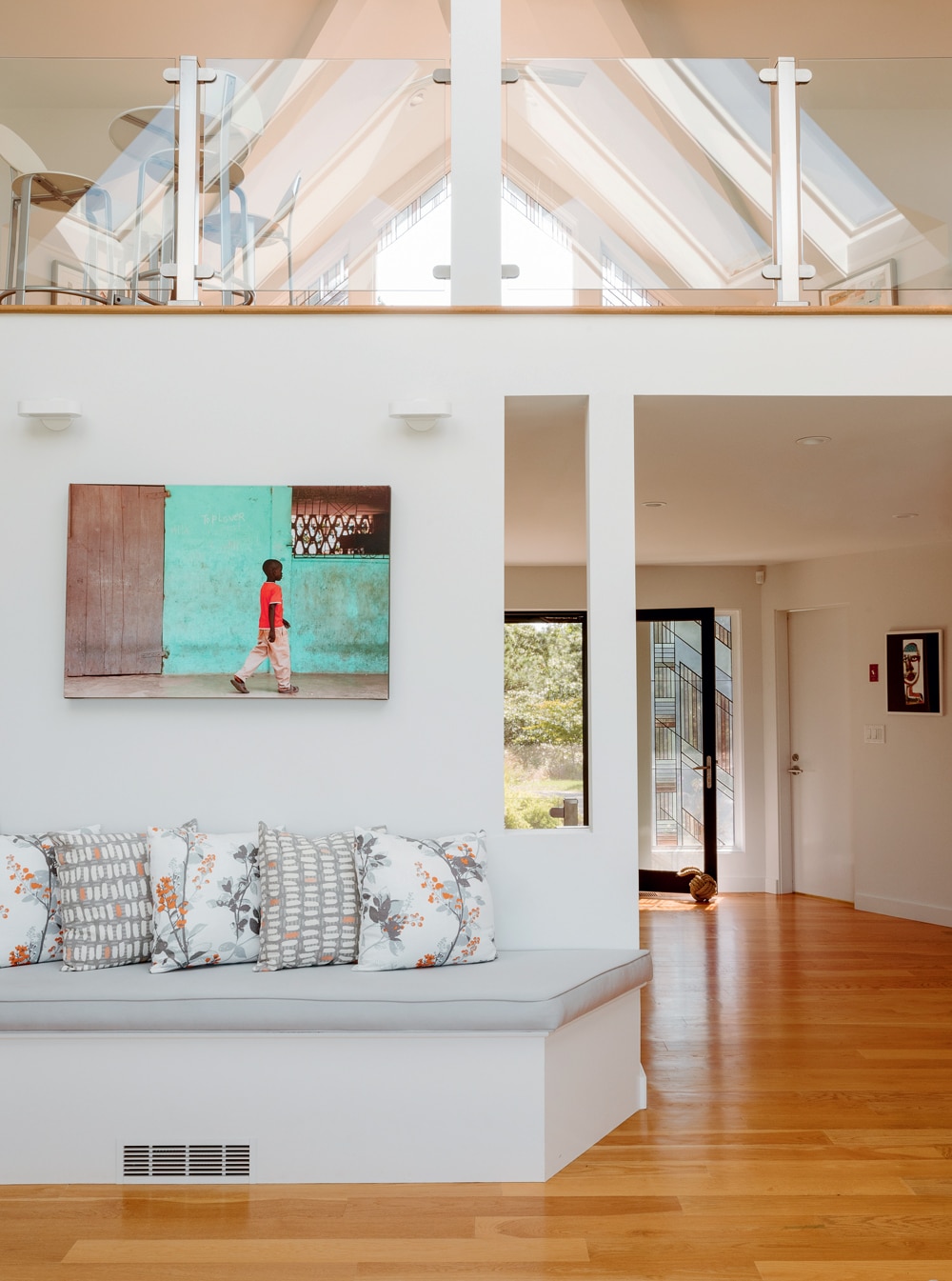
Photo Credit : Elizabeth Cecil | Styling by Liz Hynes
“Juliette,” Walter said, “worked closely with the interior designer. She had a good idea about what she wanted. But of course, I helped. We do almost everything together.” Juliette, who had been on the phone with her brother, the poet and actor Saul Williams, joined us, mentioning that they had started coming to the Vineyard about 20 years ago.
Walter burst out laughing. “We’d rent the same little house in Oak Bluffs. We looked like the Beverly Hillbillies. We’d pack up a cooler, go to Costco, and spend the week cooking. At the end of the first week, our daughter said, ‘Oh my God … can we do this again?’”
They started to bring their siblings, nieces, and nephews, as well as their parents, until they had to rent bigger homes. Over the years, Juliette loved that her two Black children could go out and play or attend parties without police bothering them. “I never worried. It was like living in a bygone time.”
Each summer, they’d make sure to spend time with their local realtor, looking at typical Cape Cods and cottages. “At one point we were moving around. Every time we moved, we’d buy a brick colonial,” said Juliette. “Maryland, D.C., and Chicago, we’d buy the same traditional houses that I grew up in or similar to the ones we vacationed in.”
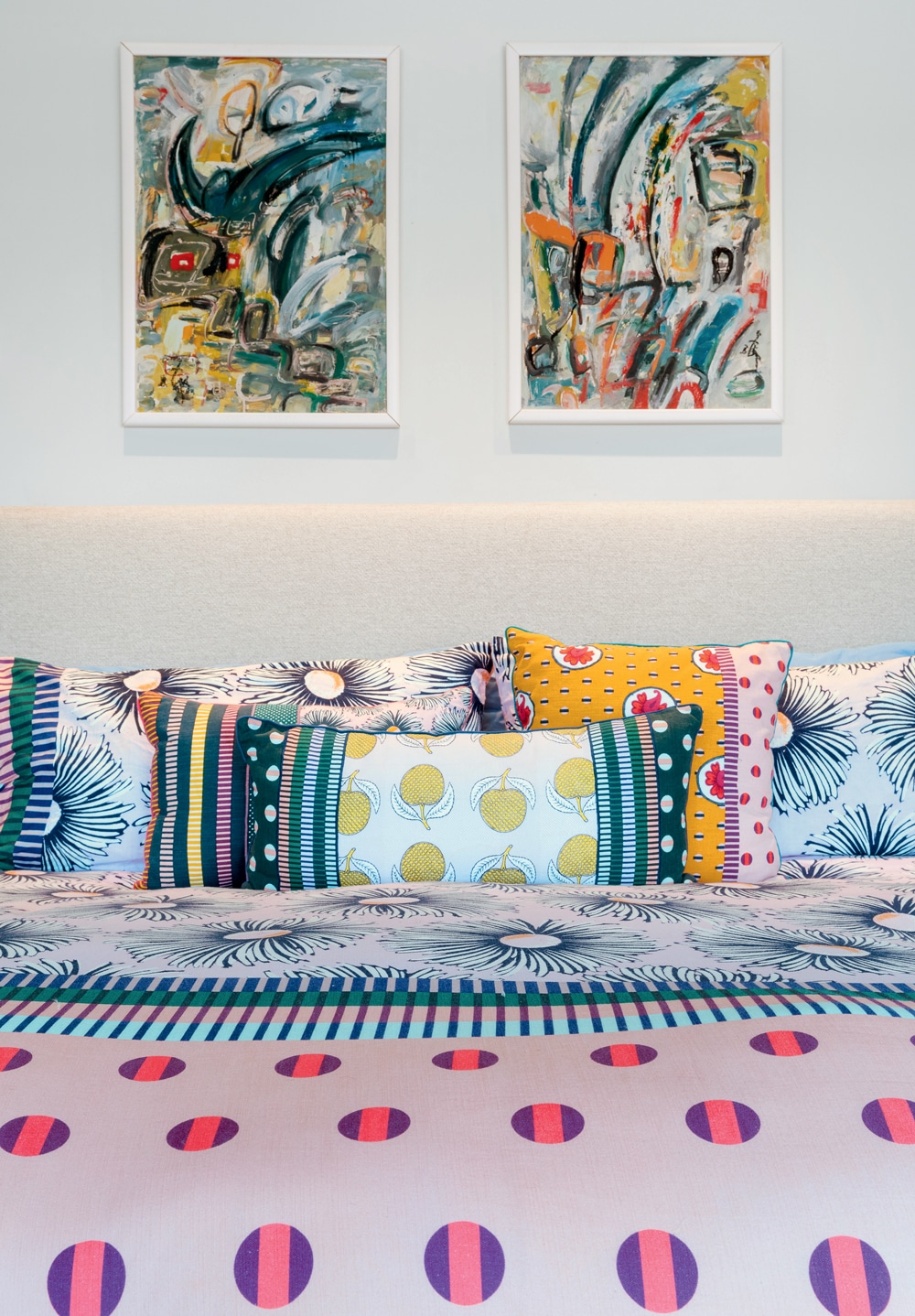
Photo Credit : Elizabeth Cecil | Styling by Liz Hynes
During an anniversary trip to Chicago, they toured one of Wright’s homes, which impressed them. “Juliette was more intentional around doing something different than what we had done,” said Walter. That’s when things started to change: “When we moved to Chicago, we took our traditional house and made it modern inside,” Juliette said.
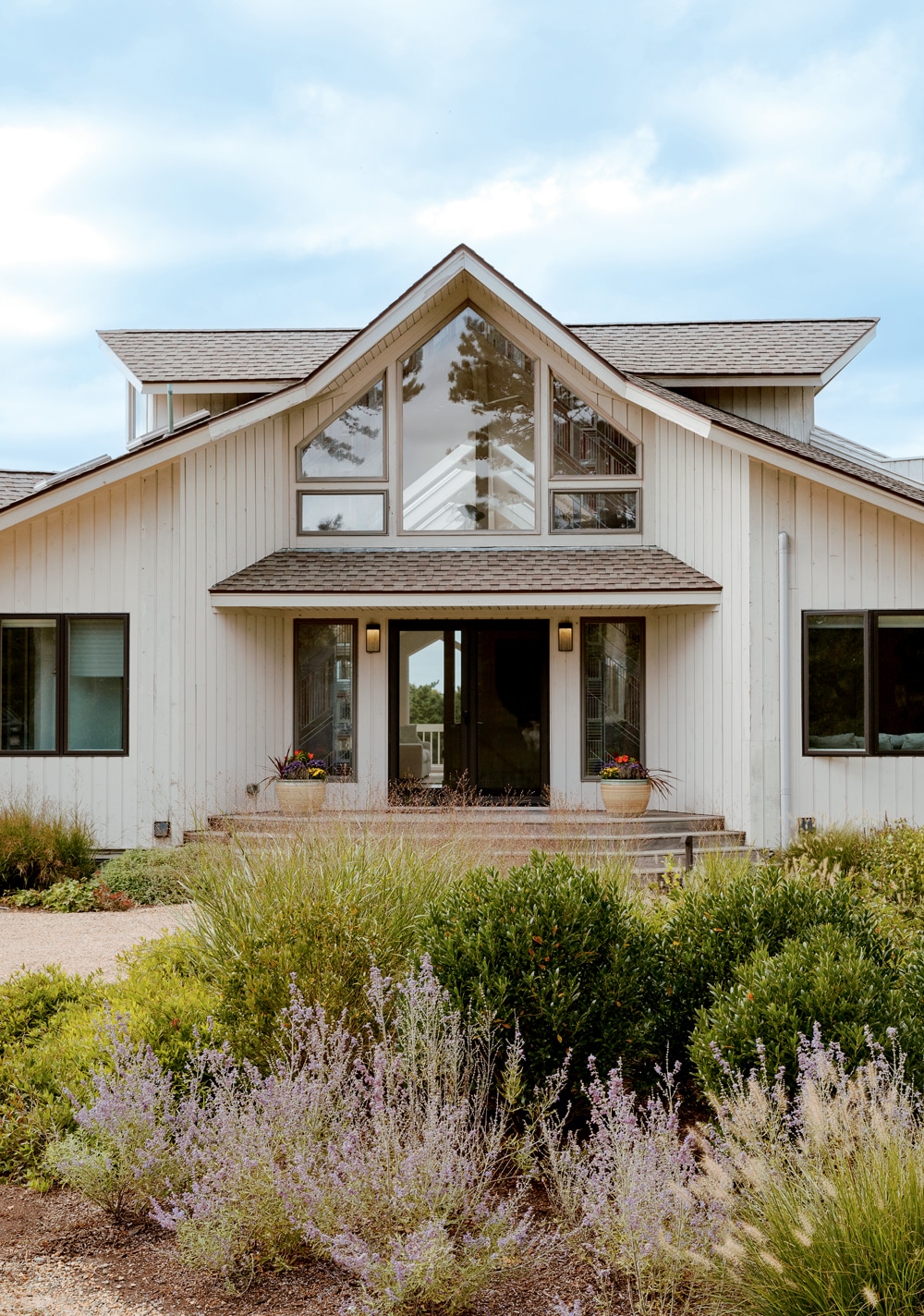
Photo Credit : Elizabeth Cecil | Styling by Liz Hynes
They also started changing up things in the Vineyard and got serious about buying; the realtor led them to the midcentury modern in West Tisbury.
On the day in 2017, the day the couple would decide whether to purchase it, their entire tribe arrived at the home. Walter found Juliette’s mother in a room, crying. “I’m just so happy and proud of you guys,” she said. The whole family knew this was the right house. Also that day, Gail Lofberg, the seller, showed up.
Now in her eighties, she connected to the couple immediately. When Walter led the family to a circle of prayer, Lofberg asked them to pray for her son who had just passed away. They remained in touch, and she even sold them art she had collected. The Lofbergs had one of the first fund-raisers for Barack Obama. Following suit, the Pryors held a fund-raiser for national political figures from Georgia, where they live.
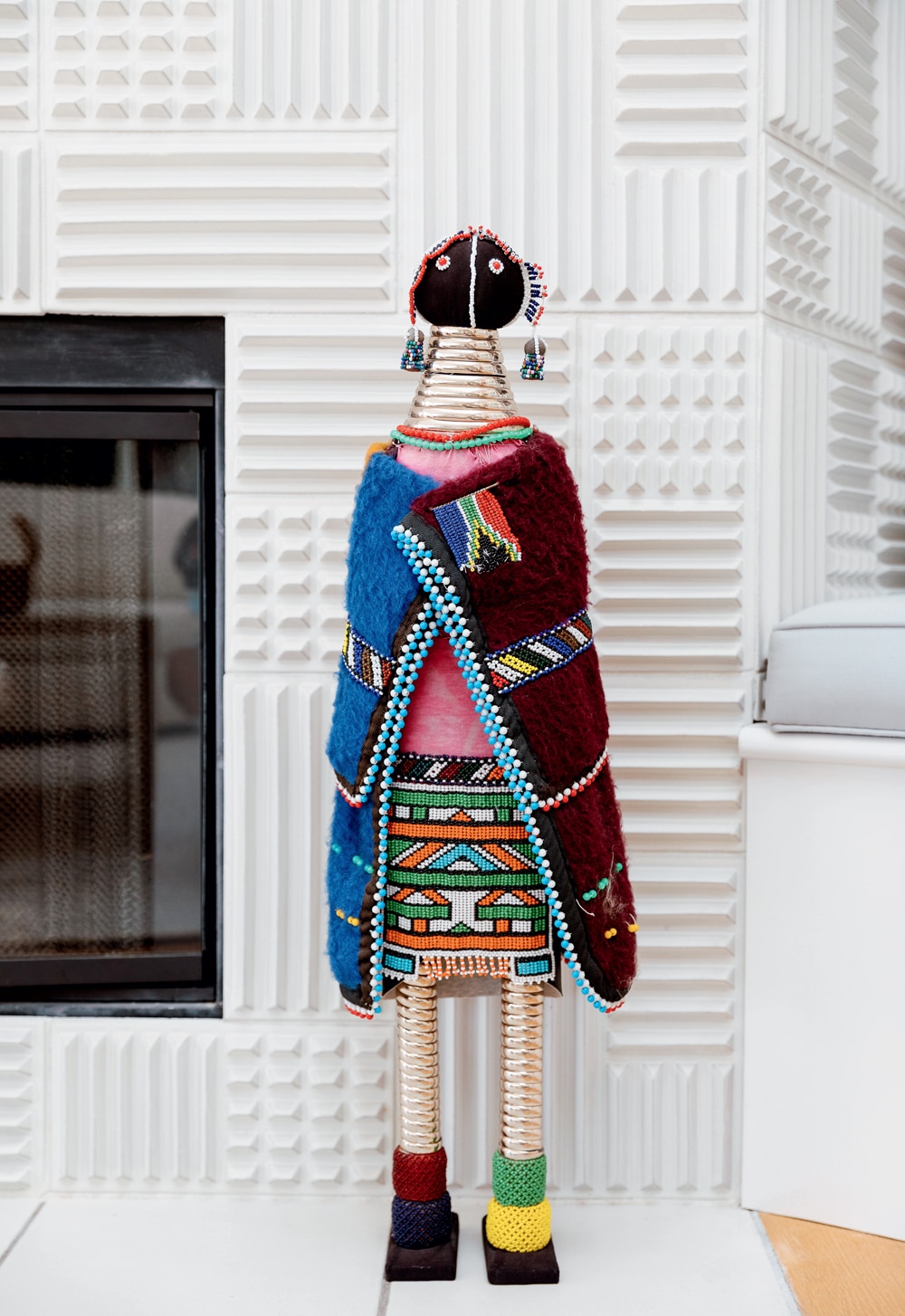
Photo Credit : Elizabeth Cecil | Styling by Liz Hynes
“We just felt it has all come full circle,” Juliette said.
Finally, I asked my burning question: “Is this a Wright home?”
Walter cleared it up. “It’s patterned after Frank Lloyd Wright’s honeycomb house, or Hannah House, that sits on Stanford’s campus. Wright designed that house using hexagons, which means, at least in the honeycomb house, there are no right angles at all. In our house, there are a few, but not many.”
Gail Lofberg explained a bit more. She and her husband, Richard, knew Eleanore Pettersen, one of Wright’s last students and apprentices, and decided to have her be the architect.
“I knew it,” I told her. Mystery solved!


